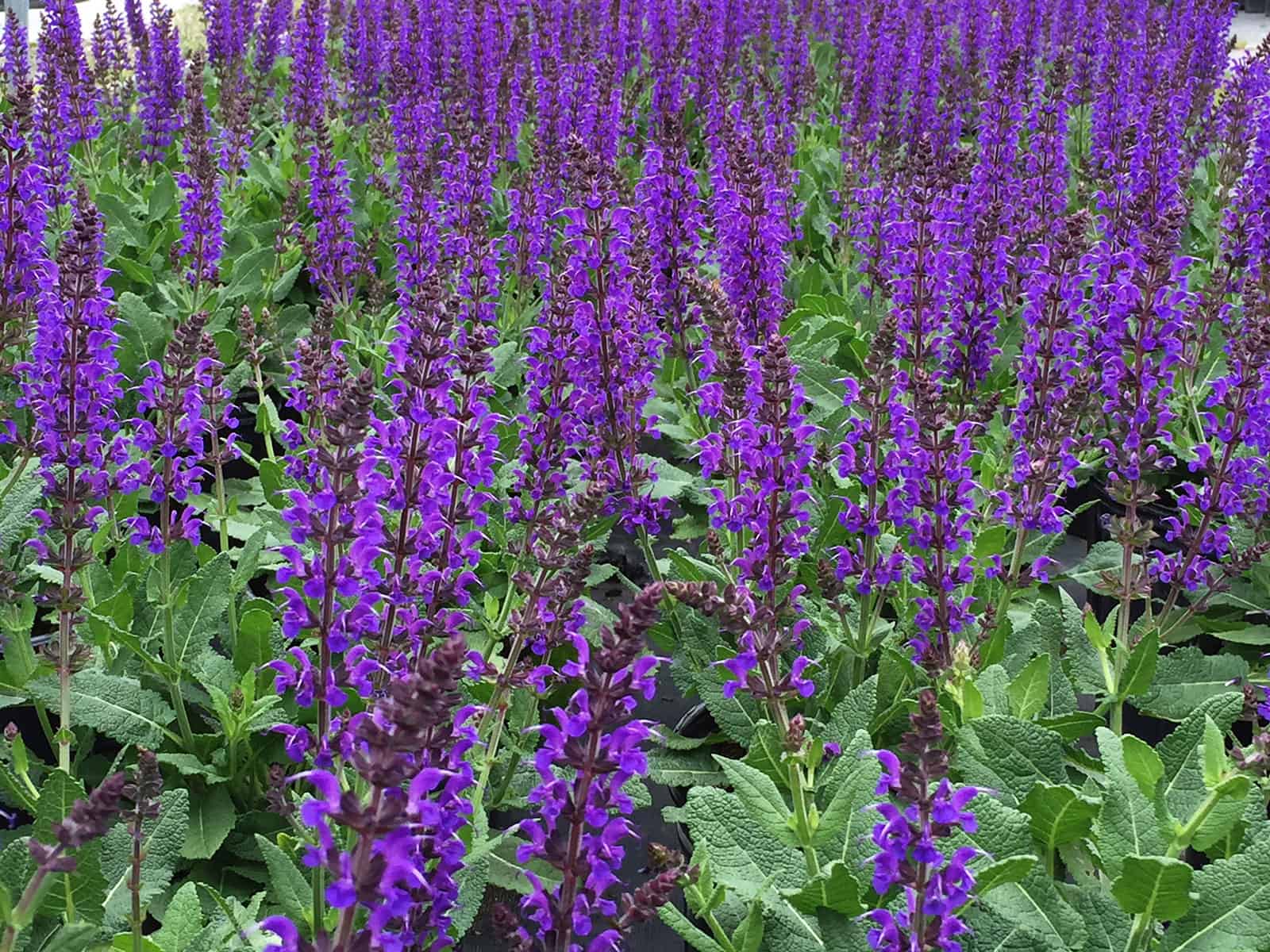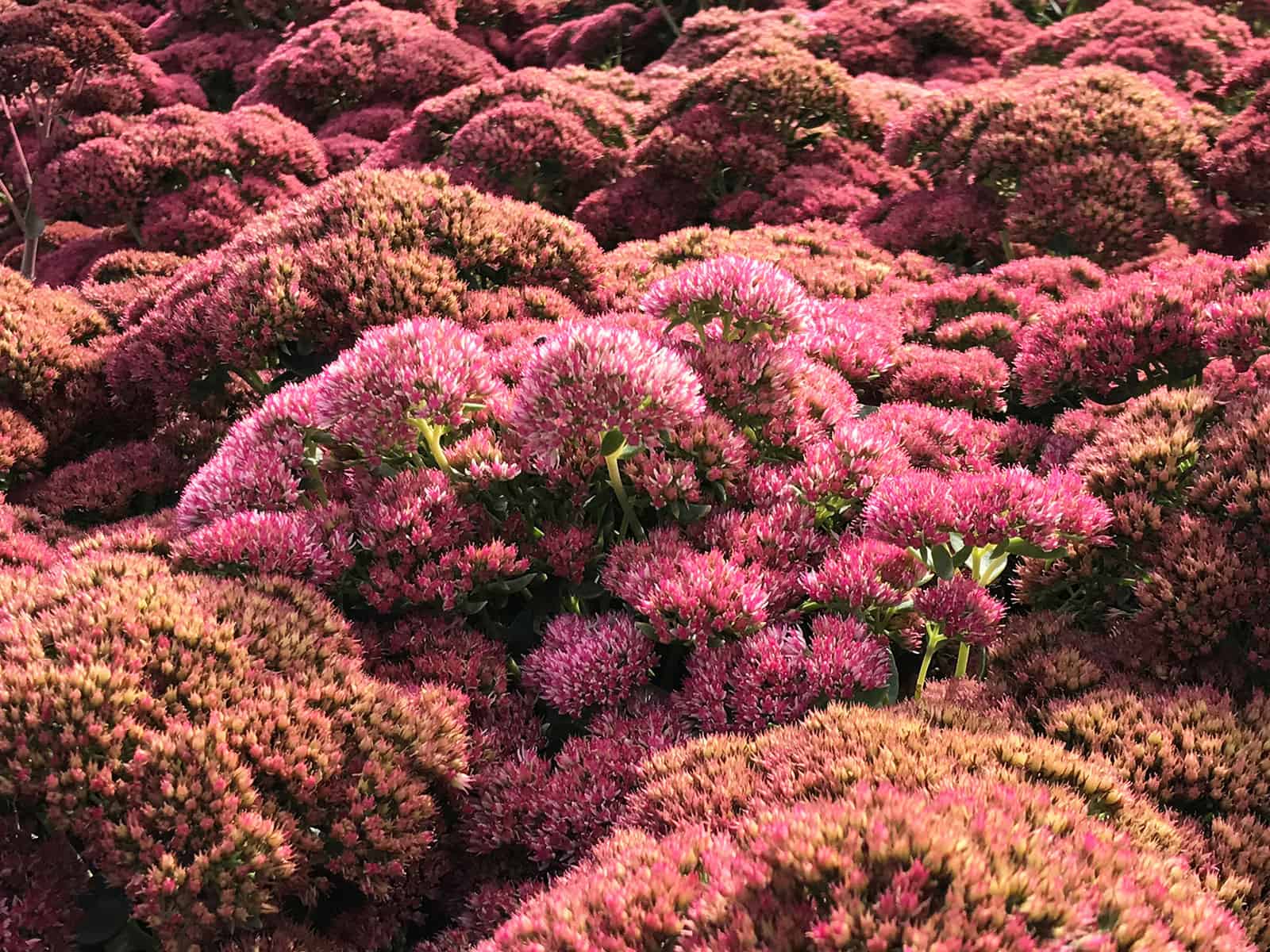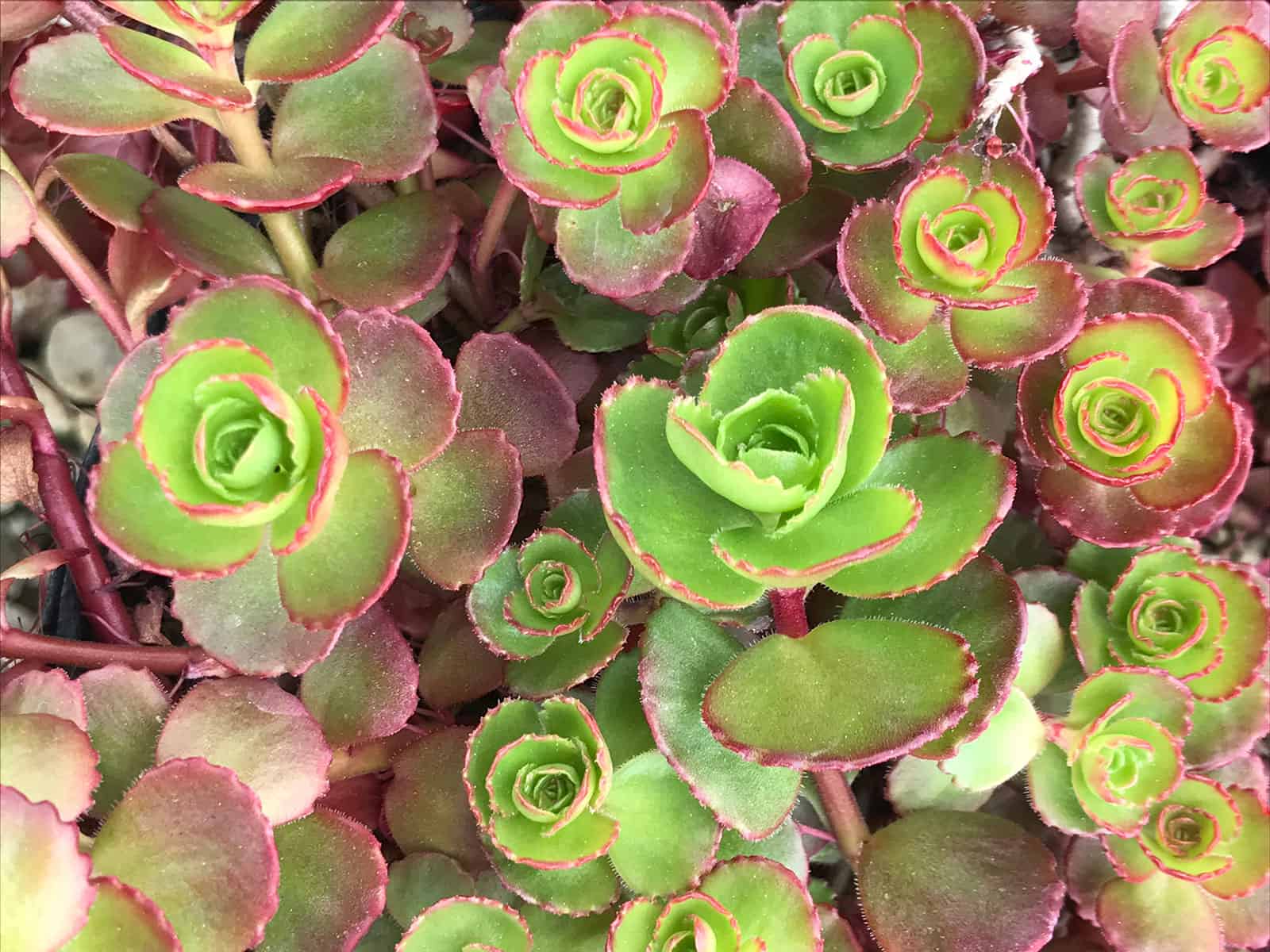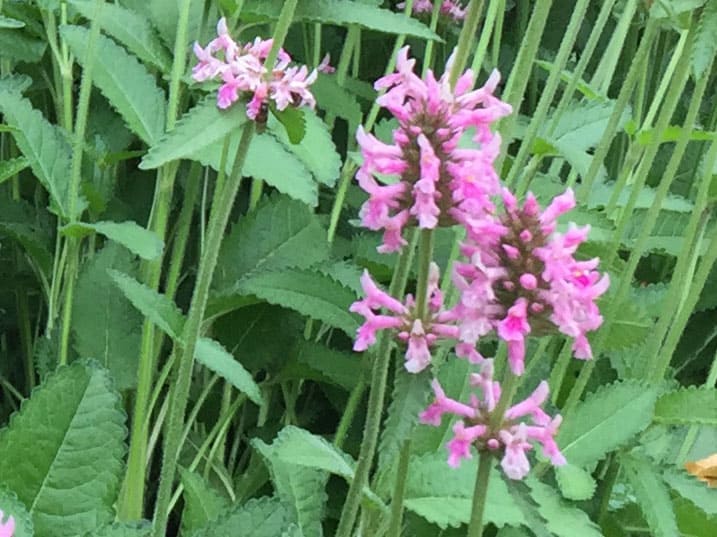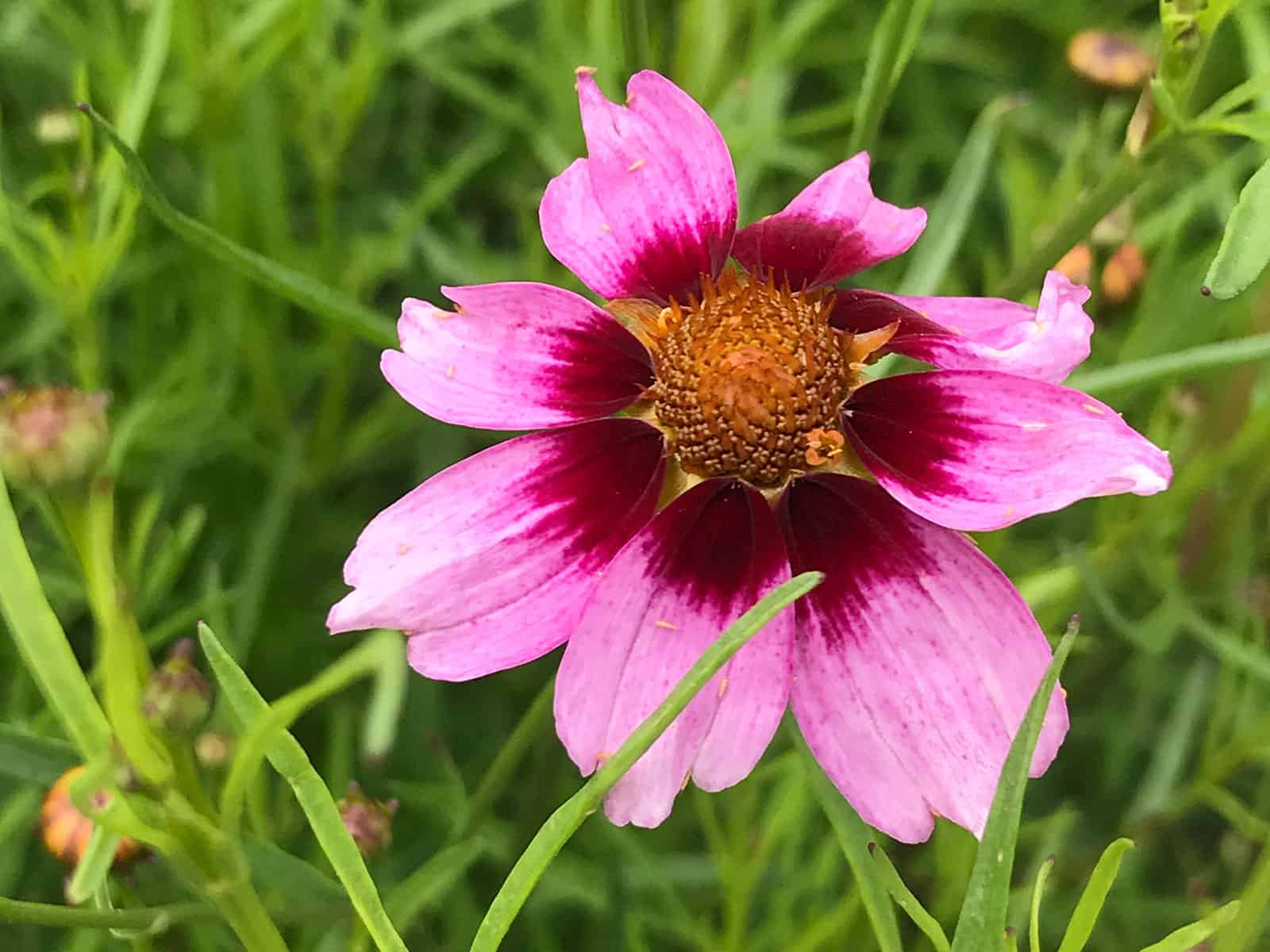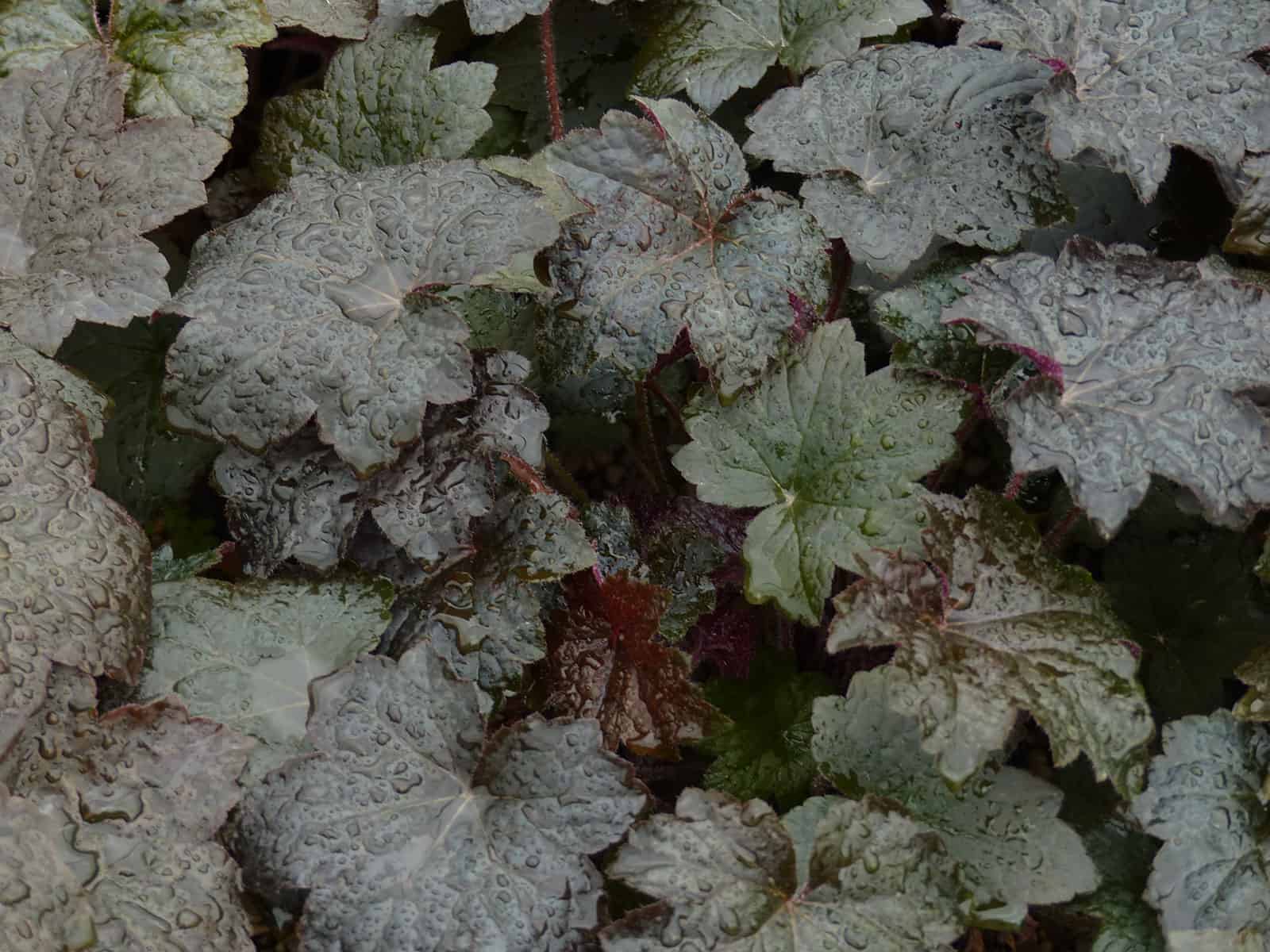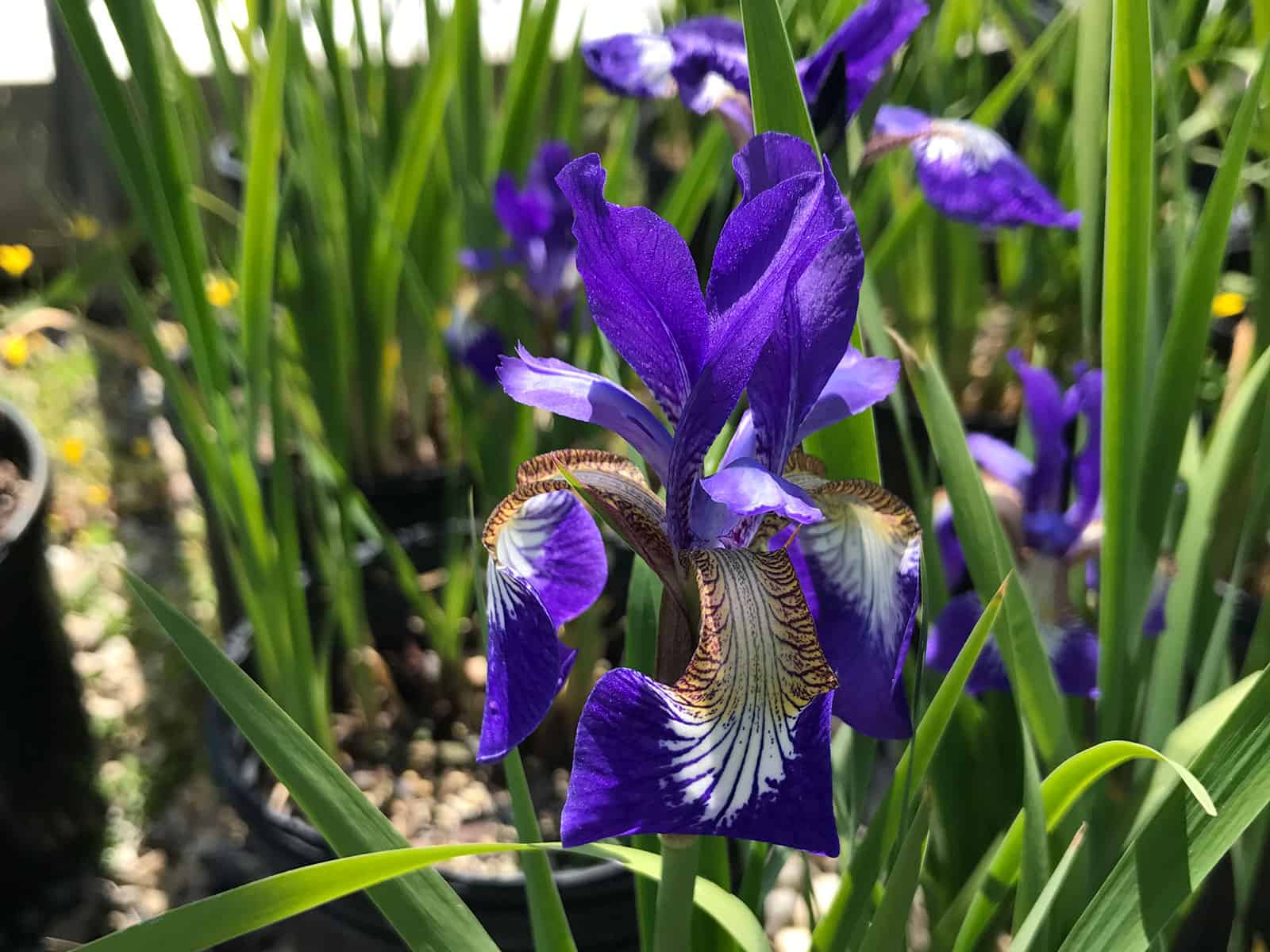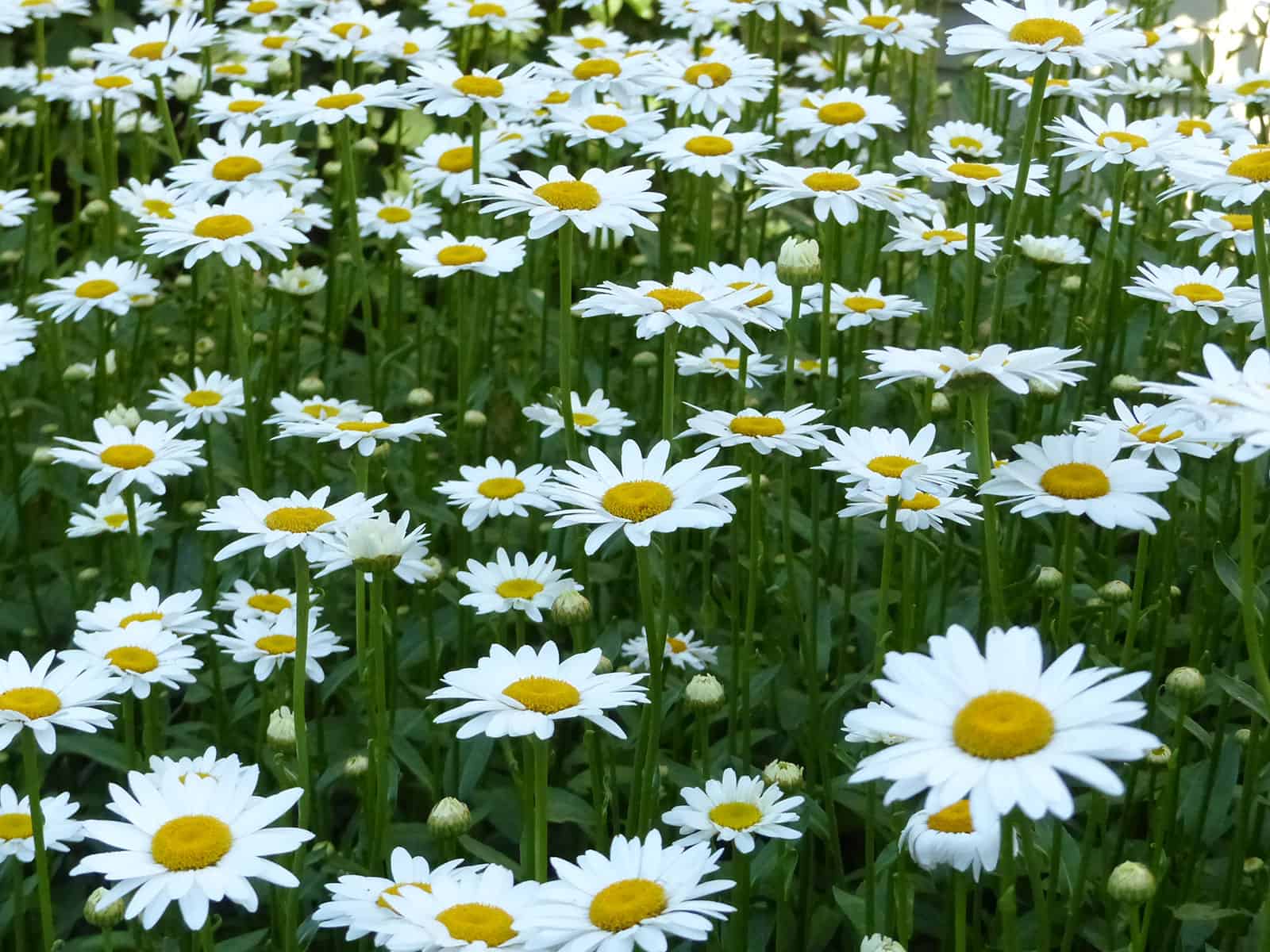Salvia nemorosa ‘May Night’. Garden sage. One of the most commonly used salvias in the northeastern US, it is covered in striking dark violet-blue flower spikes in May and June and remains upright and tidy throughout the season. Attracts birds, butterflies and bees. Makes an excellent cut flower, fresh or dried, and its leaves are freshly aromatic.
A terrific low evergreen groundcover for sunny areas with poor dry soil. This forms a trailing mat of succulent golden-yellow leaves. Clusters of yellow starry flowers appear during the summer. When planted in containers or on a wall this develops a beautiful cascading habit. Plants may be pruned back at any time if they get too large. Foliage sometimes develops beautiful amber tones in the autumn and winter. Does well in large rock gardens where the plants can be given room to spread. Best with occasional to no foot traffic. Drought tolerant. Registered with COPF: royalty required for propagation.
The border varieties of Stonecrop are a dependable choice for the late summer and fall garden, offering foliage interest earlier in the season, then a colourful display of flowers in the fall. This Canadian selection is an improvement on the older Autumn Joy, with a taller habit and stronger, less floppy stems. Plants begin to produce green broccoli-like buds in mid-summer, which gradually open into enormous dusty-rose flower heads, finally deepening to rich rusty-red during autumn. Even the dead flower heads have good winter effect. An outstanding cut flower, and also attractive to butterflies. Registered with COPF: royalty required for propagation.

Culture: Easily grown in acidic, average, dry to medium moisture, well-drained soils in full sun. Tolerates some light shade. Likes sandy or gravelly soils. Tolerates poor soils. Needs good soil drainage to perform well. Drought tolerant. Avoid overwatering. Plants may be sited 12” apart when grown as a ground cover. Easily propagated by cuttings or division. Plants spread easily (root where nodes touch the ground). Cut a leaf from a healthy sedum with about 1-2″ of stem and plant the stem with the leaf above soil. Plants are evergreen in warm winter climates.
Noteworthy Characteristics: Sedum spurium, commonly called Caucasian stonecrop or two row stonecrop, is a low-growing, sprawling, mat-forming sedum or stonecrop that is commonly grown as a ground cover. It is native to the Caucusus. This is an evergreen plant that typically rises only 3-6” tall but spreads to 18-24” wide by creeping, branching stems that easily root at the nodes. Thick, succulent, opposite, obovate, flattened leaves (to 1” long) with wedge-shaped bases are toothed near the ends. Leaves are medium green with reddish-tinged margins. Lower stem leaves are deciduous, but newer leaves near the stem tips are evergreen, typically turning deep burgundy in fall for overwintering. Leaves are arranged in two rows along the stems, hence the sometimes used common name of two row stonecrop. Tiny, 5-petaled, star-shaped, pinkish-red flowers (to 3/4” diameter) in dense, 4-branched inflorescences (to 4-6″ tall) bloom from late spring to mid-summer (June-July in St. Louis) atop upright reddish flower stems. Flowers are attractive to butterflies.
Genus name comes from the Latin word sedeo meaning to sit in reference to the general growing habit of many of the sedums (they sit and sprawl over rocks).
Specific epithet means false. Its use here is unclear.
‘Fuldaglut’ is a low-growing, mat-forming, maroon-leaved cultivar that grows 2-3” tall but spreads to 18” wide. Leaves are attractive throughout the growing season. Foliage is semi-evergreen in St. Louis winters.
Problems: No serious insect or disease problems. Slugs and snails may appear. Watch for scale.
Garden Uses: Rock garden or small area ground cover. Border fronts. Stone wall pockets. Sunny banks or slopes. Edging. Containers. Best when planted in groups or massed as a ground cover.
This tough, drought-tolerant species has glossy deep green leaves and, in early summer, half-inch golden yellow flowers that open from pink buds. It grows to about 6 inches tall and a little wider and makes a good groundcover.
Noteworthy Characteristics: Long-lasting, star-like, golden yellow flowers.
Care: Grow in well-drained soil of moderate fertility that is neutral to slightly alkaline. Full sun.
Propagation: Take stem cuttings or root leaves in early summer. Start seed in fall. Divide in spring.
Problems: Mealybugs, scale insects, slugs, and snails can be problems.
Read more: http://www.finegardening.com/stonecrop-sedum-kamtschaticum#ixzz53nFjuIzC
A cousin to the familiar Lamb’s-Ears, but not at all similar. This is a clump-forming perennial, forming a low mound of green foliage that remains attractive all season long. In early summer the upright spikes of ‘cotton candy’ pink flowers appear attracting bees to the nectar. Removing faded flowers will encourage more buds to form for weeks on end. An interesting and unusual perennial for near the front of the border, or in containers. Plants may be clipped back hard immediately after blooming, to tidy up the clumps for the rest of the season. Easily divided in early spring. Bred by Richard Hawke and introduced to the market by Chicago Botanic Garden. USPP#21436: unlicensed propagation prohibited.
An improved selection of the Coreopsis ‘Rosea’. This forms a low, bushy mound of ferny green foliage, bearing masses of pink to rose colored daisy like flowers. Flowering begins in early summer and continues for weeks.
This selection was the first of many purple-leaved Coral Bells, and is still an excellent choice for towards the edge of the border, or in containers and tubs. Plants form a low mound of maple-shaped leaves, from bronzy-green to rich purple-red. Spikes of small creamy-white flowers appear in early summer. In hot summer areas a part shade location will help to prevent the leaf colour from fading. Evergreen in mild winter areas, but plants may be clipped hard in early spring. Division is not always easy, but can be attempted in spring. A former Perennial Plant of the Year for 1991
The Siberian Iris Caesar’s Brother iris produces deep purple flowers in late spring with sturdy stems which rise to 40″ high above a clump of grass-like, linear leaves. The delicate leaves make them one of the queens of fresh cut floral bouquets. After blooming is complete, the vase-shaped foliage will retain its green color into the fall. Symbolizes: eloquence, deep sentiment, faith hope & wisdom. February birth month flower. 25th Wedding Anniversary flower.

Easily grown in average, dry to medium, well-drained soils in full sun. Good soil drainage is essential. Wet soils in winter can be fatal. Tolerates some light shade, particularly in hot summer climates or when plants are being grown in dryish soils. Remove spent flower heads to promote additional bloom. Divide clumps as needed (every 2-3 years) to maintain vigor. Plants are somewhat short-lived. Consider cutting stems back to basal leaves after flowering to preserve plant energies and perhaps prolong plant life.
Noteworthy Characteristics: Leucanthemum x superbum, commonly called Shasta daisy, is a hybrid developed by Luther Burbank (1849-1926) in the 1890s near snow covered Mt. Shasta in northern California. Burbank crossed Leucanthemum vulgare (European oxeye daisy), Leucanthemum maximum (Pyrenees chrysanthemum), Leucanthemum lacustre (Portuguese field daisy) and Nipponanthemum nipponicum (Japanese field daisy) to produce Leucanthemum x superbum which was given the common name of Shasta daisy. This hybrid typically grows to 2-3′ tall with a spread to 18″ wide.
Leucanthemums were formerly included in the genus Chrysanthemum.
Genus name comes from the Greek leukos meaning white and anthemum meaning flower in reference to the white flowers of some species.
Specific epithet means superb.
‘Becky’ is larger than most other Shasta cultivars, growing 3-4′ tall on rigid stems which do not require staking. Features 3-4″ diameter flower heads with the classic white rays and yellow center disks and coarsely-toothed, lance-shaped, medium green leaves. Stems do not require staking. Long bloom period of July through September. Excellent and long-lasting fresh cut flower.
Problems: No serious insect or disease problems. Leucanthemums generally have some susceptibility to verticillium wilt, leaf spots and stem rots. Aphids, leaf miners and mites are occasional visitors.
Garden Uses: Shasta daisies provide long-lasting summer bloom and are mainstays of the perennial border, cottage garden and cutting garden. Rock gardens. Containers.
